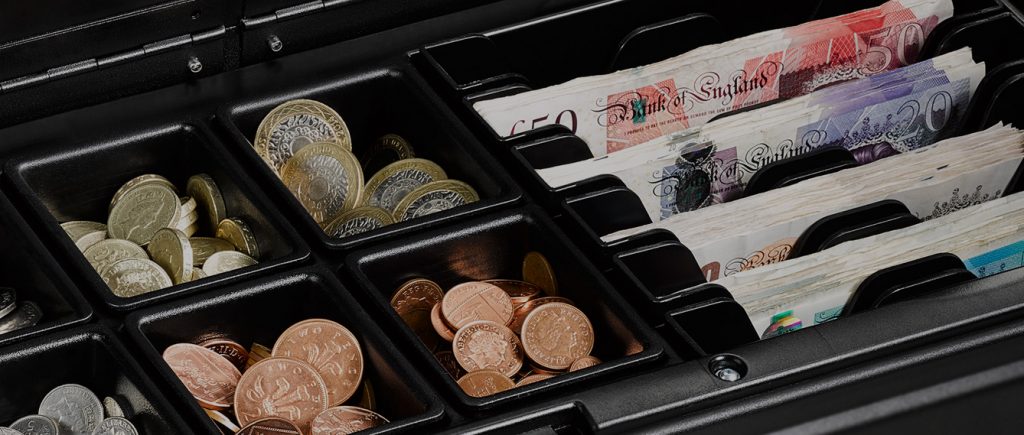When it comes to the optimal amount of cash held in your stores it’s a delicate balancing act. Too much cash sitting in your cash drawers or back-office safes and it’s a security hazard. Too little and you risk running out of change – causing problems for both your cashiers and customers. Worse still, if cash continually runs low, emergency change orders are likely, and these inevitably come at a cost. To avoid these unnecessary charges and reduce the risk of cash loss, managers should look to optimise the amount of cash held in their store. But when visibility of the cash in your organisation is poor, how can you strike the right balance?
When you know how much physical cash you have across your business and where it is, your organisation can make more informed decisions and enjoy greater efficiency gains. You can also plan CIT schedules and change orders more effectively, optimising the cash management function and driving efficiency.
But, when visibility of cash across your stores is unclear or the cash management function is ineffective, this can lead to inefficiencies, unnecessary costs and even shrinkage.
The first step is to drive a lean cash management function that optimises the level of cash across your stores is to understand the limitations of your current processes. Are overarching corporate policies preventing stores from flexing change orders with demand? Or, is a lack of visibility leading to cash loss? The larger your organisation is, the more unlikely it is that you can be present for each cash count.
Many stores will already have strict cash management policies mandated by corporate governance that detail processes such as when or where cash is stored, when CIT will arrive to collect cash, and when change deliveries will be made. In theory, an overarching corporate policy should be an effective way of managing your store’s cash. However, when these cash management policies don’t take into account the variances in the flow of cash through individual stores (e.g. heavy traffic periods, tourist locations); it can often mean that stores are left with too much, or too little cash – and this can cause havoc.
It’s your coins that often run out first. And, when they do, it can be problematic for your cashiers who then struggle to provide customers with the correct change. It’s here that cash handling mistakes can be made, or that extra change is given away. Both of which can increase the rate of cash loss/shrink in your business.
Plus, if your cash drawers are running low on change it could lead to longer wait times for your customers as registers are taken offline for replenishment.
And when your store runs out, or even runs low on change, it’s likely that emergency change orders will be made – and you’ll often be charged for these.

If too little cash is heads, then too much cash is tails— if you even have a coin to flip. Inefficient cash management processes lead to too much cash residing in your stores.
When this happens, the security risk and likelihood of cash loss increases. The potential for theft from both external and internal threats is amplified.
But it’s not just the risk of theft that’s an important consideration. Stores and restaurants are fast-paced environments and if cash drawers are overflowing, the risk of accidental cash loss can surge.
Of course, securely storing and transporting your cash can mitigate some of this risk, but this still does not mean that the cash levels in your stores are optimised. When your cash is idling in back office safes, it isn’t gaining interest in your bank account.
When CIT schedules are rigid or inflexible, they are not effectively catering for the needs of your business. Fixed collection (or delivery) schedules which occur on a fixed day/time, regardless of the actual level of cash within a store can cause inefficiencies. It can lead to cross-shipping (when change is collected, only to be re-ordered/delivered shortly after), cash idling in safes for days at a time, or even unnecessary collections.
To optimise the amount of cash in your stores, you must first get better visibility of your cash. Without this, it is difficult to understand whether the cash levels across your business are optimized.
Many of the above issues are caused because senior management simply does not know how much cash they have in their stores at any one time, let alone, where it all is.
We combat these issues for our customers with our cash management technology that gives a real-time view of the cash across your stores. Use the data from your cash management technology to monitor real-time coin levels and generate alerts when change is running low so that you can replenish cash drawers before cashiers run out – and avoid unnecessary emergency order change fees.
Do your stores need to order change more than once a week? Are CIT coming too often, or not enough? There is no one-size-fits-all solution. With the data you can also set up flexible CIT contracts that allow collections and deliveries to flex with demand. Each store has a different amount of traffic and different needs when it comes to their CIT requirements. Monitor the peaks and troughs of cash levels and use real-time data to make more informed decisions around collection and delivery schedules. Avoid large quantities of cash idling in back-office safes for days at a time and ensure that the notes in your cash drawers are picked up several times a day or simply stored in a smartsafe at the point of sale.
With a small investment in cash management technology such as a cash counter, LiveSafe or LiveDrawer, cash loss is slashed, you avoid unnecessary charges and your stores benefit from greater efficiency. All of this ensures a more effective cash management function and that the level of cash across your stores is optimised to meet demand.